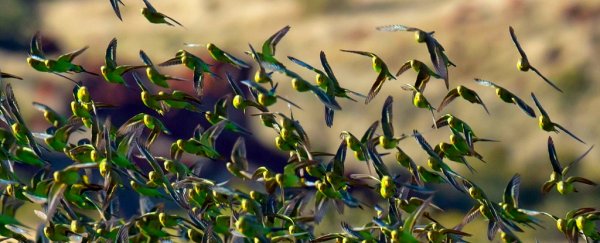Birds always seem to avoid one another, even if they're flying on what looks like a collision course.
In a study published Wednesday in PLOS ONE, researchers from the University of Queensland decided to look into how this happens.
Their rationale was that birds must've evolved over millions of years to have these skills, and it's possible that we could learn a thing or two about how to avoid possible aircraft collisions.
Humans are much newer to flight, after all.
The researchers looked at 10 birds, specifically parakeets or 'budgies'. They set the birds up on opposite ends of a tunnel and went through 102 rounds of flights. They then found out that of the 102 flights, none resulted in crashes.
What's more, the birds tended to avoid any head-on collisions by always turning right, or in some cases changing altitude so that they weren't on the same level.
Here's an example of a collision being avoided:
"As air traffic becomes increasing busy, there is a pressing need for robust automatic systems for manned and unmanned aircraft, so there are real lessons to be learned from nature," study author Mandyam Srinivasan said in a news release.
It's a pretty simple takeaway, but the researchers think the "to the right" rule, along with guidelines related to changing altitude could be useful for unmanned aircrafts and autopilot systems.
This article was originally published by Business Insider.
More from Business Insider:
